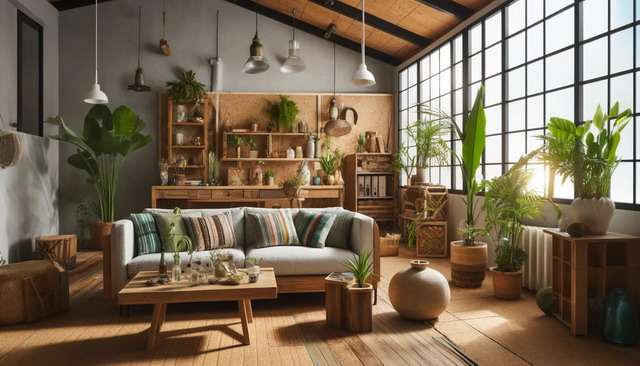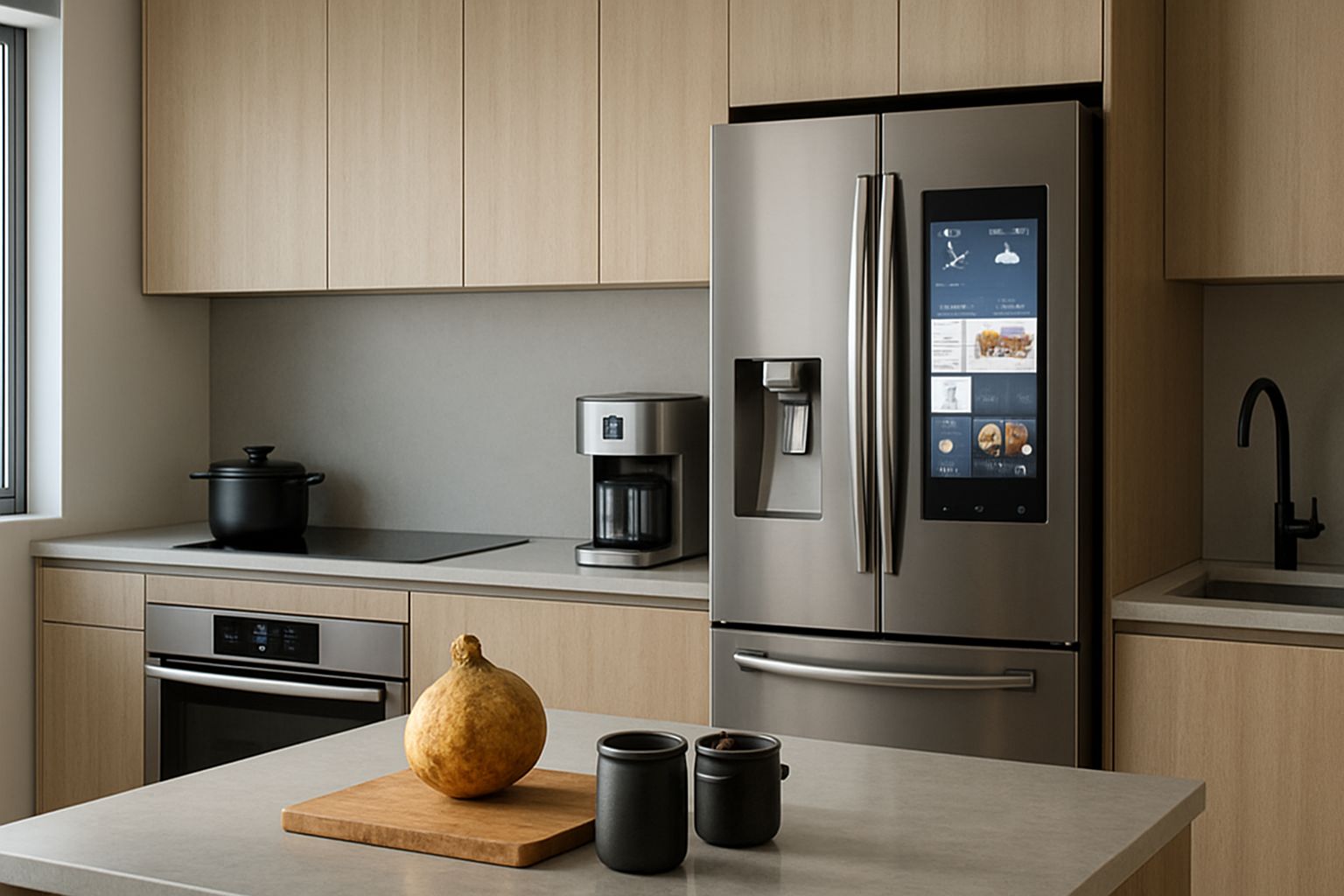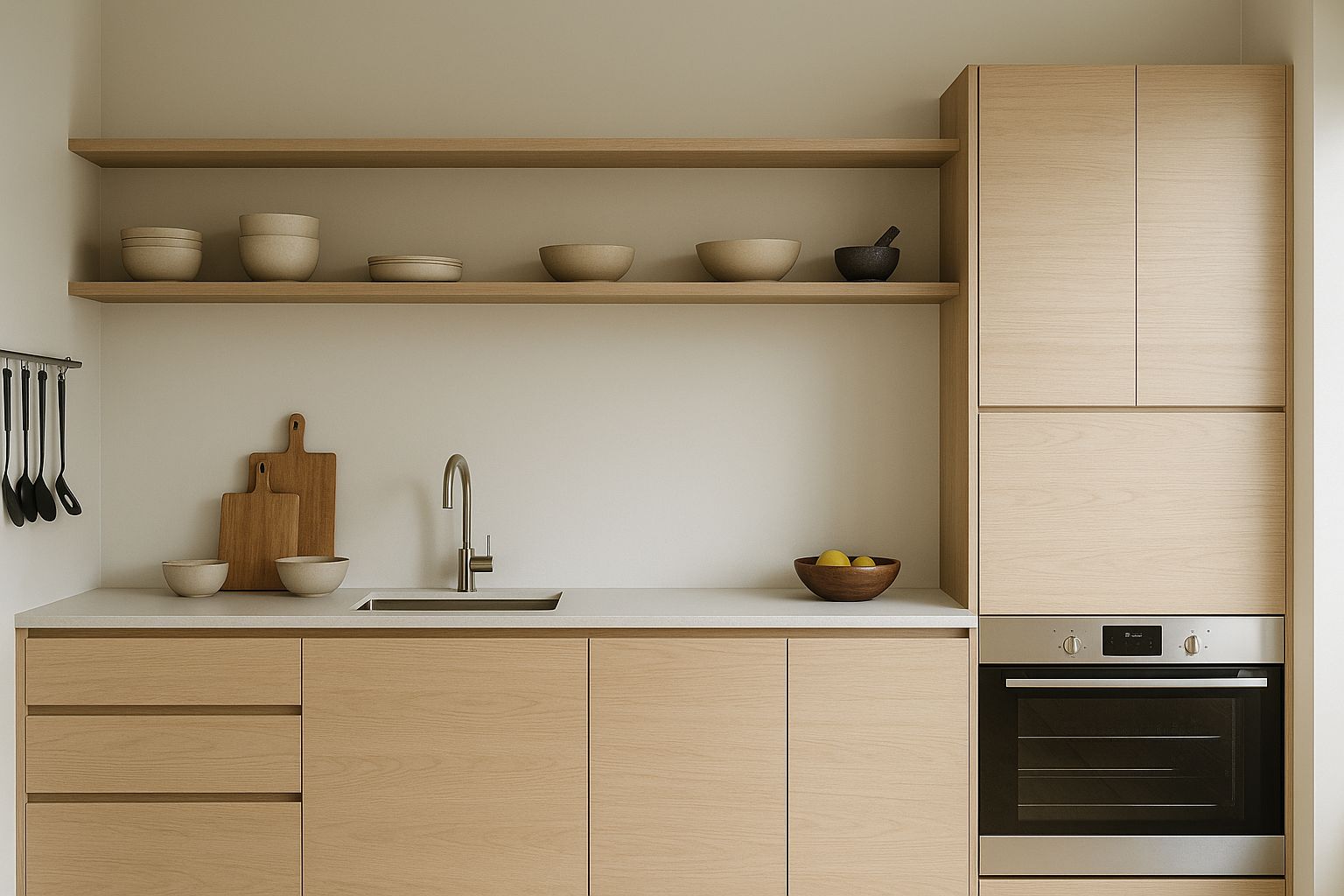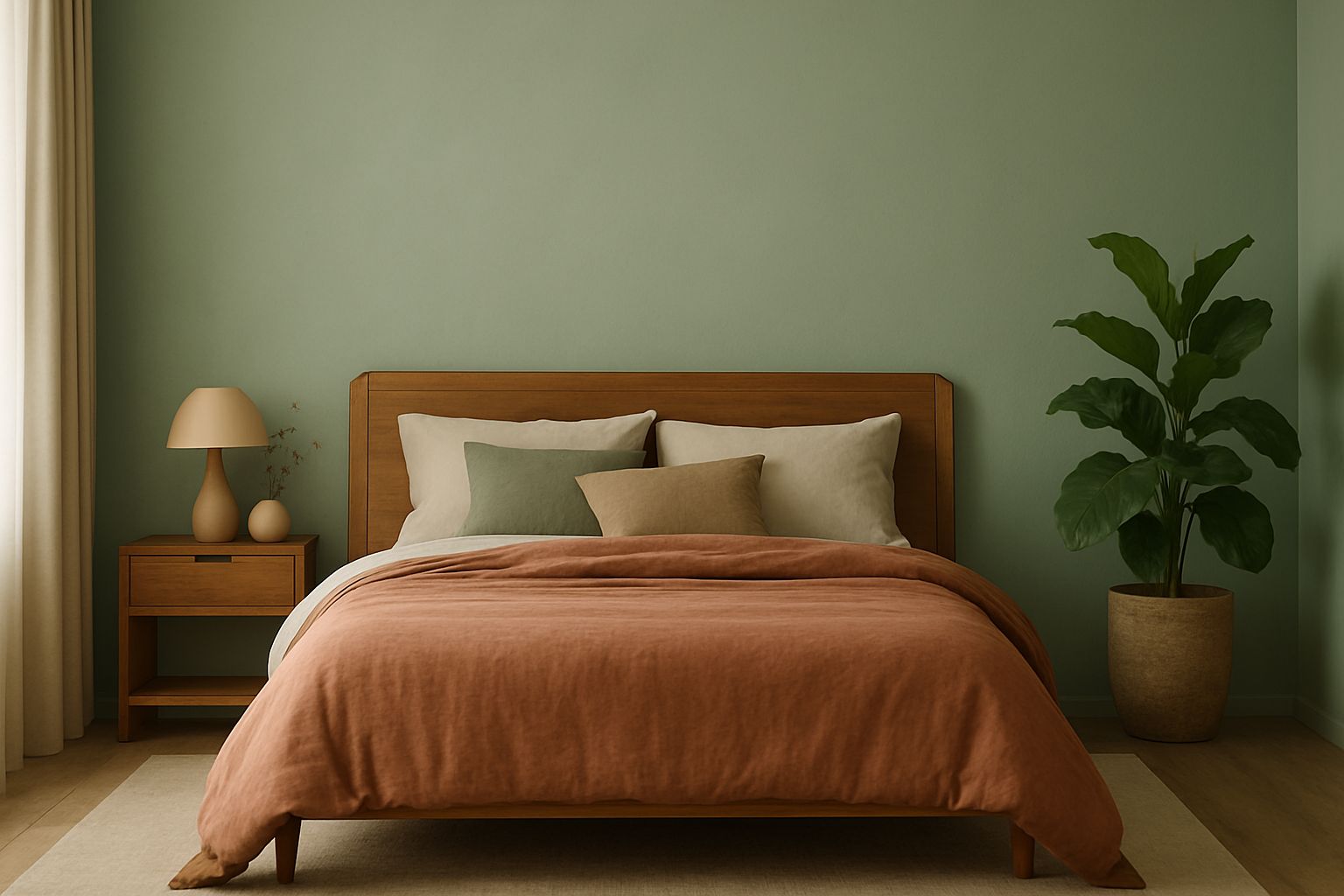As the world becomes more environmentally conscious, the demand for eco-friendly decor materials is on the rise. Sustainable living is no longer just a trend but a necessity for a healthier planet. This article explores the innovative eco-friendly decor materials for 2026, offering insights into how these materials can transform homes into stylish and sustainable havens.
Sustainable Materials
Sustainable materials are the cornerstone of eco-friendly decor. These materials are designed to reduce environmental impact and promote long-term sustainability. From recycled decor to biodegradable furnishings, the options are vast and varied. The use of sustainable materials not only conserves resources but also ensures that home decor does not contribute to pollution and waste. In 2026, the focus on sustainability in home decor will be more critical than ever, with consumers seeking out materials that are both stylish and environmentally friendly.
Recycled Decor
Recycled decor is a revolutionary approach to sustainable living, turning waste into stylish and functional home accessories. This practice not only reduces the amount of waste in landfills but also conserves resources by reusing materials that would otherwise be discarded. In 2026, recycled decor is set to become even more innovative and widespread, offering endless possibilities for eco-conscious homeowners.
Types of Recycled Materials
Recycled materials used in home decor range from glass and metal to plastic and fabric. Each type of material has its unique properties and applications:
- Recycled Glass: Often used in vases, lamps, and countertops, recycled glass adds a touch of elegance and sustainability to any home. It is created by melting down old glass products and reforming them into new, useful items.
- Recycled Metal: Metals like aluminum and steel are durable and versatile, making them ideal for furniture, light fixtures, and decorative items. Recycled metal products are often indistinguishable from those made from new metal.
- Recycled Plastic: Plastic waste can be transformed into a variety of decor items, from outdoor furniture to indoor accessories. Innovations in recycling technology have made it possible to create high-quality, aesthetically pleasing products from plastic waste.
- Recycled Fabric: Old textiles can be repurposed into rugs, cushions, and upholstery. This not only extends the life of the fabric but also adds a unique, personalized touch to home decor.
Applications in Home Decor
Recycled decor can be incorporated into nearly every aspect of home design:
- Furniture: Recycled materials are used to create sustainable furniture that is both stylish and durable. From tables and chairs made from reclaimed wood to sofas upholstered in recycled fabric, the options are limitless.
- Accessories: Small decor items like picture frames, mirrors, and planters made from recycled materials can add a sustainable touch to any room.
- Art: Artists are increasingly using recycled materials to create unique, eco-friendly art pieces. These artworks not only beautify homes but also tell a story of sustainability and creativity.
Examples of Innovative Products
The market for recycled decor is growing rapidly, with many companies leading the way in innovation:
- VIG Furniture: Known for its contemporary designs, VIG Furniture uses recycled materials to create chic and sustainable home furnishings.
- EcoChic Lifestyles: This company specializes in furniture made from reclaimed wood and metal, offering products that are both stylish and environmentally friendly.
- Green Toys: Although primarily known for its children’s toys, Green Toys also offers a range of home decor items made from recycled plastic.
Recycled decor not only helps in reducing waste but also supports a sustainable lifestyle. By choosing products made from recycled materials, homeowners can make a positive impact on the environment while enjoying unique and stylish decor.
Biodegradable Furnishings
Biodegradable furnishings are made from materials that can break down naturally, reducing waste and environmental impact. Common biodegradable materials include mushroom mycelium, plant-based resins, and natural fibers. These materials are not only eco-friendly but also add a unique aesthetic to home decor. As these materials decompose, they return nutrients to the soil, creating a closed-loop system that benefits the environment.
Biodegradable furnishings are especially popular in items such as planters, packaging, and even some types of furniture. The use of mushroom mycelium, for example, has grown significantly, providing a lightweight yet sturdy material that can replace traditional plastics and foams. Similarly, plant-based resins offer an alternative to petroleum-based products, reducing reliance on fossil fuels.
Organic Home Decor
Organic home decor focuses on using materials that are grown without synthetic pesticides or fertilizers. Common materials include organic cotton, wool, and hemp. These natural fibers are not only sustainable but also provide a healthier living environment by reducing exposure to harmful chemicals. Organic home decor items range from bedding and textiles to furniture and accessories.
The demand for organic home decor is driven by the increasing awareness of the health risks associated with conventional materials. Organic cotton, for instance, is grown using methods and materials that have a low impact on the environment. Wool and hemp are also prized for their durability, comfort, and biodegradability, making them ideal for eco-friendly interiors.
Renewable Resources
Renewable resources such as bamboo and cork are becoming increasingly popular in home decor. Bamboo is fast-growing and highly durable, making it ideal for furniture and flooring. Cork, harvested from the bark of cork oak trees, is renewable and offers excellent insulation properties, making it a great choice for flooring and wall coverings.
Bamboo and cork are not only sustainable but also versatile, allowing for a wide range of applications in home decor. Bamboo can be used for everything from flooring and furniture to decorative items, while cork is valued for its acoustic and thermal properties. The use of these materials supports sustainable forestry practices and reduces the carbon footprint of home decor.
Green Interior Design
Green interior design incorporates eco-friendly materials and practices to create sustainable and healthy living spaces. This approach focuses on energy efficiency, indoor air quality, and the use of non-toxic materials. By adopting green design principles, homeowners can create beautiful spaces that are kind to the planet.
Green interior design also emphasizes the use of natural light, proper ventilation, and energy-efficient appliances. These practices not only reduce energy consumption but also improve the overall comfort and well-being of the home’s occupants. By integrating sustainable materials such as recycled decor, biodegradable furnishings, and renewable resources, green interior design creates harmonious and environmentally friendly living spaces.
Upcycled Furniture
Upcycling involves transforming old or discarded items into new, functional decor pieces. This practice not only reduces waste but also allows for creativity and personalization. Popular upcycled items include furniture made from reclaimed wood and metal, which add character and history to home interiors.
Upcycled furniture often features a mix of vintage and modern elements, creating unique and eclectic pieces that stand out. The process of upcycling also supports local artisans and promotes the use of locally sourced materials, further reducing the environmental impact. By choosing upcycled furniture, homeowners can enjoy one-of-a-kind pieces that tell a story while contributing to a sustainable lifestyle.
Non-Toxic Finishes
Traditional finishes can release volatile organic compounds (VOCs) into the air, harming indoor air quality. Non-toxic finishes, including low-VOC paints and water-based sealants, offer a safer alternative. These finishes are made from natural ingredients and are free from harmful chemicals, ensuring a healthier home environment.
Non-toxic finishes are available in a variety of options, from natural oils and waxes to water-based polyurethane and eco-friendly paints. These products provide the same level of protection and durability as conventional finishes but without the negative health and environmental effects. Using non-toxic finishes is an essential step in creating a sustainable and healthy living space.
Low VOC Paints
Low VOC paints are designed to emit fewer volatile organic compounds, making them a safer choice for home interiors. These paints are available in a wide range of colors and finishes, providing the same quality and durability as traditional paints but with a reduced environmental impact.
Low VOC paints contribute to better indoor air quality, reducing the risk of respiratory problems and other health issues associated with high VOC levels. They are particularly beneficial in homes with children, pets, or individuals with sensitivities to chemicals. By choosing low VOC paints, homeowners can create beautiful, vibrant spaces without compromising their health or the environment.
Reclaimed Wood
Reclaimed wood is sourced from old buildings, barns, and other structures, giving it a unique character and history. This sustainable material is perfect for creating furniture, flooring, and wall coverings that are both stylish and environmentally friendly. The use of reclaimed wood not only reduces the demand for newly harvested timber but also repurposes materials that might otherwise end up in landfills.
Reclaimed wood is prized for its distinctive appearance, often featuring weathered textures and rich patinas that cannot be replicated with new wood. This material can be used to create a wide range of decor items, from rustic dining tables and headboards to accent walls and shelving units. By incorporating reclaimed wood into home decor, homeowners can add warmth and character to their spaces while supporting sustainable practices.
Natural Fibers
Natural fibers such as hemp, linen, and jute are renewable and biodegradable, making them ideal for eco-friendly decor. These materials are used in a variety of home products, including rugs, cushions, and upholstery, offering a sustainable alternative to synthetic fibers. Natural fibers are not only environmentally friendly but also durable and comfortable, making them a popular choice for eco-conscious consumers.
Hemp, for example, is a highly sustainable crop that requires minimal water and pesticides. It is used to create strong, long-lasting textiles that are perfect for home decor. Linen, derived from the flax plant, is another sustainable fiber known for its breathability and softness. Jute, often used in rugs and curtains, is a fast-growing plant that is both renewable and biodegradable. By choosing decor items made from natural fibers, homeowners can create a stylish and sustainable living environment.
Hemp Textiles
Hemp is a versatile and sustainable textile that is gaining popularity in home decor. It is durable, resistant to pests, and requires fewer resources to grow than traditional crops. Hemp textiles are used in a range of products, from curtains and cushions to upholstery and rugs. These textiles are not only eco-friendly but also offer a unique, natural aesthetic that enhances any home.
Hemp fabric is known for its strength and longevity, making it an excellent choice for high-traffic areas and frequently used items. Additionally, hemp has natural anti-bacterial and anti-fungal properties, contributing to a healthier home environment. As awareness of the environmental benefits of hemp grows, more homeowners are choosing hemp textiles for their sustainable decor needs.
Bamboo Decor
Bamboo is a fast-growing, renewable resource that is ideal for sustainable decor. Its strength and versatility make it suitable for a variety of applications, including furniture, flooring, and accessories. Bamboo decor items add a natural, organic touch to any home, combining durability with aesthetic appeal.
Bamboo’s rapid growth rate and ability to thrive without pesticides or fertilizers make it one of the most eco-friendly materials available. It can be used to create a wide range of decor items, from sleek, modern furniture to rustic, handcrafted accessories. Bamboo flooring is particularly popular for its hardness and resistance to moisture, making it a sustainable alternative to traditional hardwoods. By incorporating bamboo decor into their homes, consumers can enjoy stylish, sustainable products that support environmental conservation.
Cork Flooring
Cork is harvested from the bark of cork oak trees, making it a renewable and eco-friendly material. Cork flooring is durable, comfortable, and provides excellent insulation. Its unique texture and appearance add warmth and character to any room, making it a popular choice for eco-conscious homeowners.
Cork’s natural properties make it an ideal material for flooring. It is resistant to mold and mildew, hypoallergenic, and provides a cushioned surface that is gentle on joints. Additionally, cork flooring has excellent thermal and acoustic insulation properties, contributing to a quieter and more energy-efficient home. The harvesting process of cork does not harm the trees, allowing them to continue growing and absorbing carbon dioxide, further enhancing the material’s environmental benefits.
Reusable Materials
Reusable materials are designed to be used multiple times, reducing waste and environmental impact. Examples include reusable shopping bags, food storage containers, and water bottles. Incorporating reusable materials into home decor can significantly reduce the household’s carbon footprint and promote a more sustainable lifestyle.
In home decor, reusable materials can take the form of versatile items that serve multiple purposes. For example, glass jars can be used for storage, as vases, or even as light fixtures. Fabric bags and baskets can replace single-use plastic bags for organizing and storing household items. By choosing reusable materials, homeowners can reduce their reliance on disposable products and contribute to a more sustainable environment.
Energy-Efficient Lighting
Energy-efficient lighting, such as LED and solar-powered options, reduces energy consumption and lowers utility bills. These lighting solutions are not only eco-friendly but also provide excellent illumination and a long lifespan, making them a smart choice for sustainable homes.
LED lights use significantly less energy than traditional incandescent bulbs and have a much longer lifespan, reducing the need for frequent replacements. Solar-powered lights harness energy from the sun, providing a renewable source of illumination for outdoor spaces. These energy-efficient lighting options come in a variety of styles and designs, allowing homeowners to create well-lit, attractive environments while minimizing their environmental impact.
Eco-Friendly Home Accessories
Eco-friendly home accessories include items made from sustainable materials and those designed to reduce environmental impact. Examples include reusable kitchenware, biodegradable cleaning products, and decor items made from recycled materials. These accessories offer a simple way to make a home more sustainable.
Choosing eco-friendly home accessories can significantly reduce the environmental footprint of a household. Reusable kitchenware, such as stainless steel straws and silicone food covers, helps eliminate single-use plastics. Biodegradable cleaning products are made from natural ingredients and break down more easily in the environment, reducing pollution. Decor items made from recycled materials not only support sustainability but also add unique, artistic touches to the home. By selecting eco-friendly accessories, homeowners can enhance their living spaces while promoting environmental conservation.
Carbon-Neutral Products
Carbon-neutral products are designed to have a net-zero carbon footprint. This is achieved by offsetting the carbon emissions associated with their production and transportation. Examples include furniture, decor items, and household products that are certified carbon-neutral, helping to reduce the overall environmental impact.
Companies achieve carbon neutrality by investing in renewable energy projects, reforestation efforts, and other initiatives that offset their carbon emissions. By purchasing carbon-neutral products, consumers can support these efforts and contribute to the fight against climate change. Carbon-neutral products often come with certification labels, providing assurance that the products meet stringent environmental standards. Incorporating carbon-neutral products into home decor is a proactive way to reduce one’s environmental footprint and support sustainable practices.
Zero-Waste Design
Zero-waste design aims to eliminate waste by creating products and systems that are sustainable and efficient. This approach focuses on using materials that can be reused, recycled, or composted, ensuring that nothing goes to waste. Zero-waste design principles can be applied to home decor, from furniture and accessories to packaging and construction.
Zero-waste design encourages the use of durable, high-quality materials that can withstand long-term use. It also promotes modular and repairable designs, allowing products to be easily maintained and updated rather than discarded. In home decor, zero-waste principles can be seen in items such as furniture made from reclaimed materials, decor items that serve multiple purposes, and packaging that is fully recyclable or compostable. By embracing zero-waste design, homeowners can create beautiful, functional spaces that minimize environmental impact and promote sustainability.









